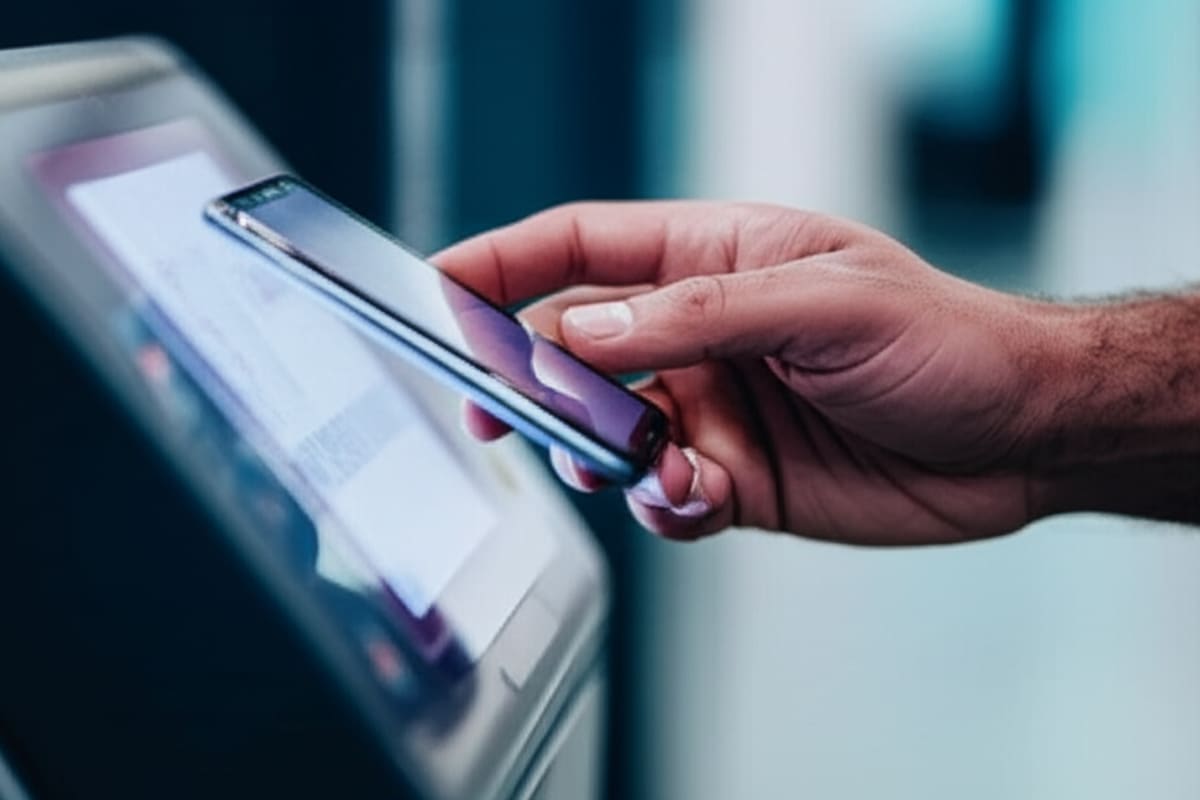Tap-to-Pay: The Tech That Could Reshape Public Transit, One Swipe at a Time

I still vividly remember that first time, you know.
It wasn't some grand technological leap; it was just a simple tap of my phone against a translucent rectangle at the New York City subway turnstile
Background
The light flashed green, that familiar 'click' echoed, and as the metal arms swung open, I didn't just walk through to the platform—I felt like I was stepping into the future
It was a subtle shift, but one that promised a new era of effortless urban mobility
For two decades, New York's iconic MetroCard was the pass to the city’s vast subterranean labyrinth. It was a staple, almost a cultural artifact, but let's be honest, it was also clunky.
Magnetic strips wore out, machines ate your money, and tourists often found themselves utterly bewildered trying to navigate a foreign system. But that day, with my phone, it was seamless.
No fumbling for a specific card, no worrying about insufficient balance – just a quick, satisfying interaction.
It wasn't just about convenience; it was about reimagining the very entrance to urban mobility, making it instantly accessible and remarkably user-friendly
Now, fast forward a bit, and what felt like a glimpse into tomorrow has become a global movement.
Cities worldwide are grappling with similar challenges: escalating urban congestion, environmental concerns, aging fare collection systems, growing operational costs, and the constant demand for faster, more efficient travel
Public transportation is often the critical artery of a modern city, and its efficiency directly impacts daily life.
This is where tap-to-pay technology comes in, leveraging EMV (Europay, MasterCard, and Visa) contactless payment standards and NFC (Near Field Communication) to offer a timely and elegant solution
A Seamless Journey for the Modern Commuter So, what does this actually mean for you, the everyday commuter, whether you're navigating the bustling streets of Bangkok or the sprawling subway lines of London
It's simple: your existing bank card – credit or debit – or even your smartphone or smartwatch, becomes your ticket
No more queuing up for tickets, no more wrestling with confusing vending machines, and crucially, no more specific transit cards to load and lose.
Imagine landing in a new city, perhaps Manila or Kuala Lumpur, and being able to hop straight onto public transport without needing to figure out a foreign ticketing system, buy a new card, or worry about local currency
That’s the profound promise of this technology, significantly enhancing commuter convenience and operational efficiency globally.
“It’s not just about speed; it’s about breaking down barriers,” explains Sarah Chen, a mobility consultant based in Singapore
“Tourists get instant access, locals enjoy unparalleled convenience, and everyone benefits from a streamlined experience.
We’re moving towards a world where getting around is as easy as buying a coffee
” For transit agencies, the benefits are equally compelling, if not more so.
The shift to tap-to-pay significantly reduces the operational overhead associated with printing, distributing, and maintaining traditional fare media
This translates directly into cost savings and allows agencies to allocate resources more effectively. Beyond that, it provides a treasure trove of anonymized data.
This data-driven approach isn't just about cutting costs; it's about building a smarter, more responsive public transport network that can adapt to the city's dynamic pulse
Southeast Asia's Leapfrogging Potential While cities like London, with its groundbreaking Oyster card and subsequent integration of contactless bank cards, led the charge, the implications for rapidly urbanizing regions like Southeast Asia are particularly profound
Countries here are often characterized by vibrant, bustling metropolises experiencing explosive growth and grappling with severe traffic congestion, pollution, and the urgent need for sustainable infrastructure
Public transport is a crucial antidote to these urban woes, and modernizing its access is key to fostering more livable and environmentally friendly cities
Consider Kuala Lumpur, where the Touch 'n Go card has been a ubiquitous presence for years, but direct bank card integration is slowly gaining traction, promising a more open-loop system
Or Singapore, where the EZ-Link card, a local pioneer, is now seamlessly complemented by SimplyGo, allowing commuters to tap their bank cards directly.
In other key regional hubs like Jakarta, Manila, and Bangkok, existing e-money cards (like Jakarta's E-money cards, Manila's Beep Card, and Bangkok's Rabbit Card) are gradually laying the groundwork for more open-loop systems, showcasing a clear trajectory towards broader adoption of contactless payments
“For Southeast Asian cities, this isn't just an upgrade; it’s a chance to leapfrog,” notes Dr. Aris Indrawan, an urban planning expert in Indonesia.
“Many of our transit systems, while expanding rapidly, are relatively newer than their Western counterparts in terms of their digital infrastructure foundation
Integrating tap-to-pay at this stage means avoiding the legacy issues some older systems face and building a truly interconnected, future-proof network from the outset
” This rapid adoption presents a unique opportunity to build advanced, integrated transit systems that can handle immense growth while navigating diverse socio-economic landscapes
However, the rollout isn't without its unique regional challenges
While smartphone penetration is exceptionally high across much of Southeast Asia, financial inclusion isn't universally comprehensive.
Many commuters, particularly in more rural or lower-income segments, might not possess traditional bank cards or have consistent access to digital payment apps
This digital divide necessitates hybrid solutions – ensuring physical transit cards remain available and can be topped up through diverse channels, including cash
Governments and transit authorities are acutely aware of this, working tirelessly to ensure that technological advancements don't inadvertently exclude vulnerable populations, guaranteeing accessibility for all commuters
The Road Ahead: Challenges and the Future Horizon Implementing these sophisticated systems is no small feat.
The initial investment in upgrading turnstiles, validators, and backend software can be substantial, often running into tens or even hundreds of millions of dollars
Public-private partnerships and innovative financing models are often essential to get these ambitious projects off the ground. There are also critical discussions around data privacy and security.
As more of our travel patterns are digitized, ensuring the protection of personal information becomes paramount.
Users need strong assurance that their data isn't just secure from breaches, but also used ethically and transparently by transit authorities and their partners
Yet, despite these hurdles, the momentum is undeniable.
This technology isn't just about paying for a ride; it’s a foundational piece for the future of urban mobility – what we call Mobility as a Service (MaaS)
MaaS envisions a fully integrated platform where an app doesn't just plan your journey across buses, trains, ride-shares, and even bike rentals, but also allows you to pay for everything with a single tap, dynamically adjusting fares for the most economical or fastest route
It's about providing a seamless, on-demand travel experience tailored to individual needs, making urban transportation truly effortless and personalized
This holistic approach, built on the backbone of contactless payments, promises to revolutionize how we interact with our cities and move within them.
You’re not just paying for a ride; you’re participating in a quiet revolution, one that’s making our cities smarter, our commutes smoother, and the future of public transportation look a whole lot more inviting
